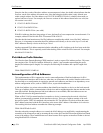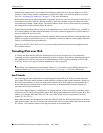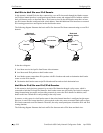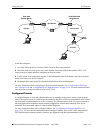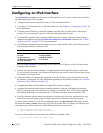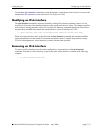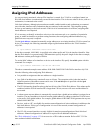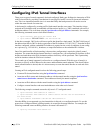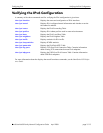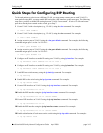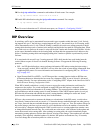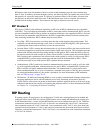
Configuring IPv6 Tunnel Interfaces Configuring IPv6
page 15-14 OmniSwitch 6600 Family Network Configuration Guide April 2006
Configuring IPv6 Tunnel Interfaces
There are two types of tunnels supported: 6to4 and configured. Both types facilitate the interaction of IPv6
with IPv4 networks by providing a mechanism for carrying IPv6 traffic over an IPv4 network infrastruc-
ture. This is an important function since it is more than likely that both protocols will need to coexist
within the same network for some time.
A 6to4 tunnel is configured by creating an IPv6 6to4 tunnel interface on a router. This interface is then
assigned an IPv6 address with an embedded well-known 6to4 prefix (e.g., 2002) combined with an IPv4
destination address. This is all done using the ipv6 interface and ipv6 address commands. For example,
the following commands create a 6to4 tunnel interface:
-> ipv6 interface v6if-6to4-192 tunnel 6to4
-> ipv6 address 2002:d467:8a89::/48 v6if-6to4-192
In the above example, 2002 is the well-known prefix that identifies a 6to4 tunnel. The D467:8A89 part of
the address that follows 2002 is the hex equivalent of the IPv4 address 212.103.138.137. Note that an IPv4
interface configured with the embedded IPv4 address is required on the switch. In addition, do not config-
ure a private (e.g., 192.168.10.1), broadcast, or unspecified address as the embedded IPv4 address.
One of the main benefits of 6to4 tunneling is that no other configuration is required to identify tunnel
endpoints. The router that the 6to4 tunnel interface is configured on, will encapsulate IPv6 packets in IPv4
headers and send them to the IPv4 destination address where they will be processed. This is particularly
useful in situations where the IPv6 host is isolated.
The second type of tunnel supported is referred to as a configured tunnel. With this type of tunnel it is
necessary to specify an IPv4 address for the source and destination tunnel endpoints. Note that if bidirec-
tional communication is desired, then it is also necessary to create the tunnel interface at each end of the
tunnel.
Creating an IPv6 configured tunnel involves the following general steps:
• Create an IPv6 tunnel interface using the ipv6 interface command.
• Associate an IPv4 source and destination address with the tunnel interface using the ipv6 interface
tunnel source destination command. These addresses identify the tunnel endpoints.
• Associate an IPv6 address with the tunnel interface using the ipv6 address command.
• Configure a tunnel interface and associated addresses at the other end of tunnel.
The following example commands create the v6if-tunnel-137 configured tunnel:
-> ipv6 interface v6if-tunnel-137 tunnel 1
-> ipv6 interface v6if-tunnel-137 tunnel source 212.103.138.137 destination
212.109.138.195
-> ipv6 address 4132:4000::/64 eui-64 v6if-tunnel-137
Note that RIPng is not supported over 6to4 tunnels but is allowed over configured tunnels. To use this
protocol on a configured tunnel, a RIPng interface is created for the tunnel interface. For example, the
following command creates an RIPng interface for tunnel v6if-tunnel-137:
-> ipv6 rip interface v6if-tunnel-137



